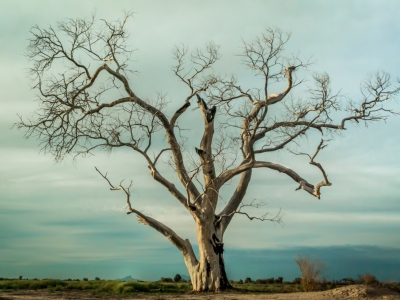
Previously in this column, we learnt about how forests act as carbon sinks. We know that trees absorb carbon from the atmosphere through photosynthesis. The gas then becomes deposited in tree biomass and in soil. But what happens when trees die? Do they release the stored carbon? Yes, they do. But how much? This is something scientists have not measured until recently. A series of new experiments, published in the journal Nature this month, is the first to put a number to this carbon emission. The study carried out by researchers from the Australian National University also draws our attention to the potential role of climate change and insect population in influencing this carbon cycle.
When trees die
When a tree dies, a new life springs forward. Fungi communities flourish on dead wood and small organisms such as salamander and insects create breeding grounds. Logs (dead trees on the ground) and snags (standing dead trees) provide a place to nest, rest, eat and grow for a number of organisms. The trees eventually decompose over a period of time. The speed at which deadwood breaks down depends mainly on interactions between the local climate and the activity of decomposers, such as fungi, microorganisms, and insects. When this decomposition happens, the trees release carbon dioxide, among other gases. The movement of carbon and other gases within forests and soils, thus, occurs in cycles. However, the full picture of the role decomposing wood plays in the global carbon cycle had been difficult to estimate.
Measuring the emission
To estimate how much carbon decaying and dead trees emit and to determine the influence of climate on the rate of decomposition, scientists from the Australian National University studied wood from more than 140 tree species in 55 forest areas on six continents. They conclude that deadwood, which includes fallen trees, standing dead trees, trunks and fallen branches, contain roughly 8% of all the carbon on Earth. Each year, on average, about 10.9 gigatons of carbon are released from decaying woody matter around the world. That’s equivalent to 115% of global annual fossil fuel emissions. Of course, not all the carbon released from deadwood goes into the atmosphere. Some becomes trapped in the soil or in creatures that use the wood for food or shelter.
Role of climate change & insects
During the study, the researchers found out that in regions where the temperature and humidity is high, the deadwood weathered and decomposed much faster. They also noticed the role played by the abundance of decomposing insects in these regions. In cooler temperate climes, the opposite happened. The boreal and temperate forests account for less than 7% of carbon released from deadwood each year.
This suggests that climate change might increase wood decomposition in tropical or subtropical areas as temperatures rise.
In recent years, scientists have begun to notice an ‘insect apocalypse’ occurring around the world, including in the tropics where most insect diversity resides. This dramatic loss of decomposers will have a massive impact on deadwood and its carbon emission. Thus both climate change and the loss of insects have the potential to alter the decomposition of wood, and therefore, carbon and nutrient cycles worldwide.
Picture Credit : Google




